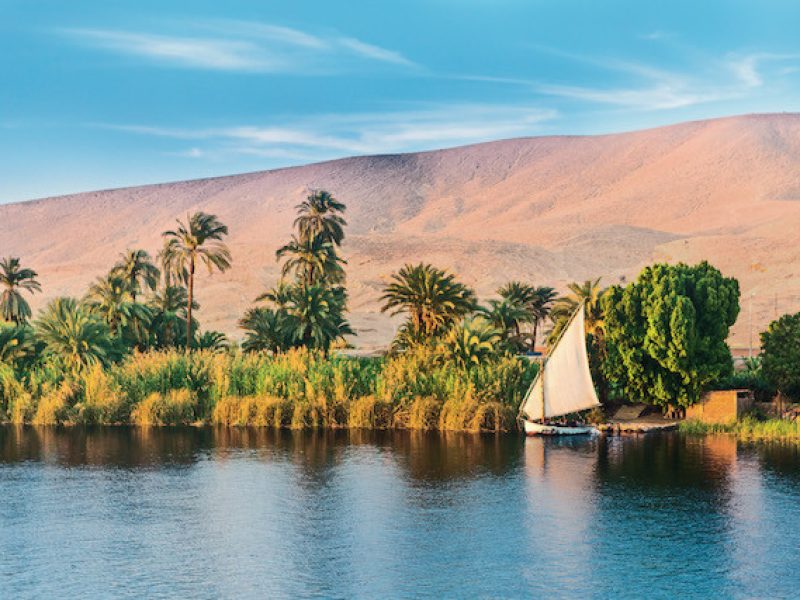Nile River “Symbol of Goodness” The Nile River is the ultimate symbol in the history of ancient Egyptian Mythology where everyone can see and feel its power of Life, Fertility, and Abundance. The Nile was the life bringer of ancient Egypt, providing water for irrigation, transportation, and sustenance, the source of all life, with the annual flooding of the Nile bringing the rich silt that fertilized the land and allowed crops to grow and the substance that birthed an endless supply of fishes. It is the heart and soul of Egypt and the ultimate provider of its culture, history, and identity. The Nile River was associated with a number of ancient Egyptian deities like Sobek and Hapi, who were believed to control the river’s floods. Osiris was believed to have been buried in the river after his death and reborn each year with the annual flooding of the Nile. This eternal cycle of death and rebirth was seen as a symbol deprived of the cycle of the Nile River.

Etymology The standard English names “White Nile” and “Blue Nile” refer to the river’s source, derived from Arabic names formerly applied to only the Sudanese stretches that meet at Khartoum. The Nile word (pronounced Nil or Neel in Arabic) is derived from the Arabic word for the indigo (Añil) colo (pronounced Nili in Arabic and its grammer) made from the indigo dye that Arabs extracted from indigo plant AKA that grew by the river Euphrates, where that indigo dye was the most natural dye used by the Ancients. For this is how the Nile River looked to Arabs when they first discovered it looking at the river from distance as an indigo snake in the yellow background of desert. In the ancient Egyptian language, the Nile is called Ḥꜥpy (Hapy) or Jtrw (Iteru), meaning “river”. In Coptic, pronounced piaro (Sahidic) or phiaro (Bohairic), means “the river” (lit. p(h).iar-o “the.canal-great”), and comes from the same ancient name. In Nobiin the river is called Áman Dawū, meaning “the great water”. In Luganda the river is called Kiira or Kiyira. In Runyoro it is called Kihiira. In Egyptian Arabic, the Nile is called en-Nīl, while in Standard Arabic it is called an-Nīl.




Comment (0)